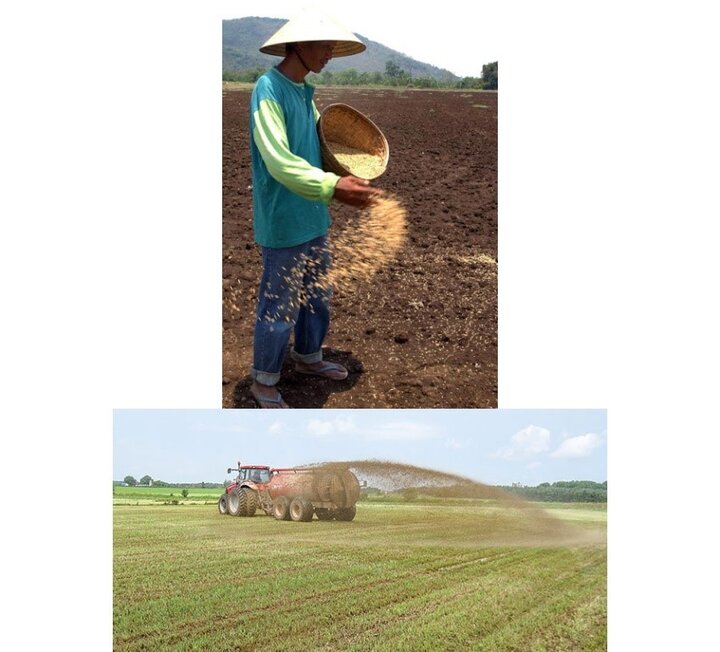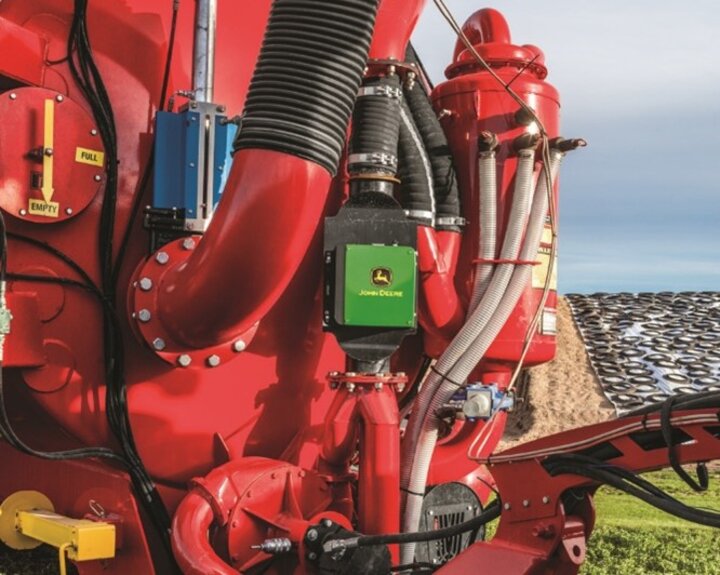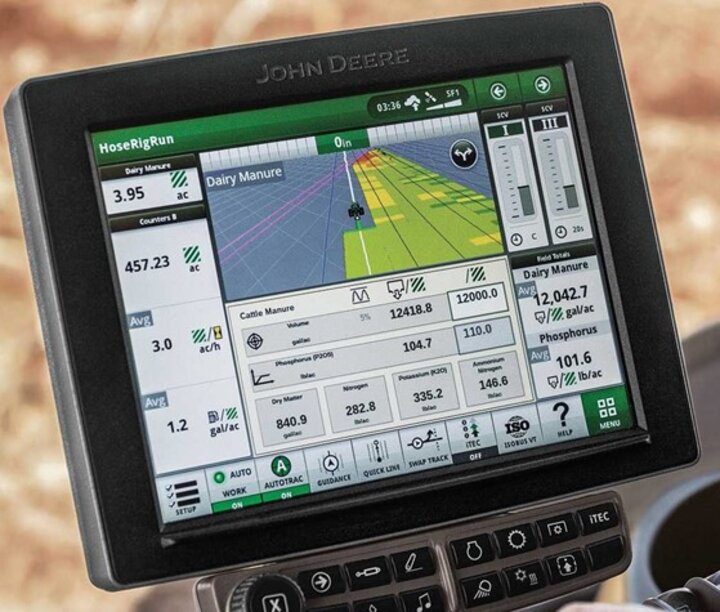Bringing Manure Application to the Digital Age
This article is written by a University of Nebraska-Lincoln student, Cole Trojan, as part of their Animal Manure Management class in Biological Systems Engineering. It has been reviewed by experts to encourage accuracy of issues presented. The article represents the student’s understanding of the subject addressed at this stage in his career. Rick Koelsch, faculty instructor

In an era of $500,000 self-propelled sprayers and $400,000 planters, whose prices’ seemingly come from the amount of precision technology incorporated into them, why is it that current manure application technologies can be compared to broadcast seeding a field by hand? Current manure application practices have little to no precision application capabilities compared to other modern agricultural equipment. Thankfully, due to some recent emerging technologies being released on the market, this does not appear to be the case any longer. Manure application is finally joining the digital age.
Precision manure application emerging technologies:
- Real-time manure nutrient sensing.
- Solid manure density sensing.
- Real-time soil mapping.
- Global positioning system (GPS) and mapping system integrations.
Manure Variability
Manure is a highly variable compound in both its composition of useful constituents such as nitrogen, phosphorous, and potassium, as well as in its composition of dry matter and overall concentration of these materials which is affected by moisture content. Between applied loads, nitrogen can vary by a factor of 4-6, phosphorous can vary by a factor of 25, and dry matter can vary by a factor of 10. Currently, manure samples must be taken prior to application to get an initial reading of these concentrations in order to apply in a field, be kept on record for the Department of Natural Resources, and must comply with the applier’s local regulations and requirements.
The goal of the following technologies is designed to reduce this variability and change the manure application process into a more accurate science. This goal is realized by applying what you want, where you want, based on a few user inputs. This leads to an efficient use of manure’s nutrients and reduces both over and under application.

Real-time manure nutrient sensing
Arguably the most valuable technology coming to market, real-time manure nutrient sensing is a huge leap forward for manure application. Currently on the market, John Deere’s Harvest lab 3000 can accurately measure a manure slurry’s composition during application over 4000 times per second using near-infrared sensor technology.
The accuracy of the samples taken are comparable to samples analyzed using wet chemical laboratory testing, all while being taken real-time and recorded during the application process in the field. This allows application rates to be adjusted based on manure constituents in real-time, with minimal user inputs. These inputs could be limiting values of nutrients and target application rates of nutrients, leading to the system regulating the slurry flow rate or the tractor’s speed accordingly.
Solid manure density sensing
Measurements of the solid manure’s density is important because various factors such as overall composition, moisture content, and a bedding or soil integrated in the manure, again, contribute to its high variability. By regularly sampling the density of manure using load cells to measure the sample weight, the application rates can be held more accurately. The density is fed into a controller to adjust various spreader characteristics such as the belt feeder speed, spinner speed, and the amount the apron is open. It can also control the tractor’s speed in conjunction with these other factors to more accurately maintain the set application rate.
Real-time soil mapping
Various types of sensors are being developed to measure characteristics of soil in the field in real-time. Unfortunately, there is not currently a one-does-all technology, but through a combination of different sensor types, many properties can be measured and recorded regarding soil in real-time. These properties can be used in conjunction with mapping software to accurately determine manure application requirements for certain areas. This would “fill in the gaps” for the current practice of grid sampling, which samples with an accuracy of 1 to 2.5 acres for soil properties and is a costly required practice when applying manure.
| Real-time measurable soil characteristics: |
|---|
| Soil pH and buffer pH |
| Macronutrient Level (Nitrogen, phosphorous, potassium |
| Soil organic matter (carbon) content |
| Soil texture (clay content) |
| Soil Moisture and temperature |
| Cation exchange capacity (CEC) |
| Soil compaction |
| Depth of any root restricting layers |
| Soil structure and bulk density |
Global positioning system and mapping system integrations

Although not a new technology, GPS use in manure application is becoming more common. By using GPS and geographic information system (GIS) mapping, all the previously referred to technologies support accurate application of manure. Other mapping integration systems can do very simple tasks that have huge benefits such as automated application shutoff (maintains mapped setbacks in sensitive areas), section control of the application equipment, and even recording weather conditions at the application time and location in the field. Using GPS and GIS technologies allows for creating variable application prescription rates for fields based on nutrient demand and setting up required buffers or boundaries. These can greatly improve efficiency, reduce the chance of human error during manure application, and simplify record keeping by recording as-applied data which is helpful for nutrient management plans and documenting regulatory compliance.
References:
Opportunities for Precision Manure Application, Kevin Erb.
Manure Constituent Sensing, John Deere.
Factors Affecting Manure Quality, Quantity, and Use, H.H. Van Horn.
Manure Management Using Precision Agriculture, Ryan Mauzey.
Variable Rate Manure Spreader: Technology to Validate a Nutrient Management Plan, Ted Funk, Matthew Robert.
Soil Sampling for Precision Agriculture, Richard Ferguson, Gary Hergert.
Guidelines for Soil Sampling, Richard Ferguson, Gary Hergert, Charles Shapiro, Charles Wortmann.
On-The-Go Vehicle-Based Soil Sensors, Viacheslav Adamchuk, Paul Jasa.
Precision Manure Application on Display at Manure Expo, Rick Koelsch.
This article was reviewed by Joe Luck, UNL Extension Specialist and Keith Glewen, UNL Extension Educator